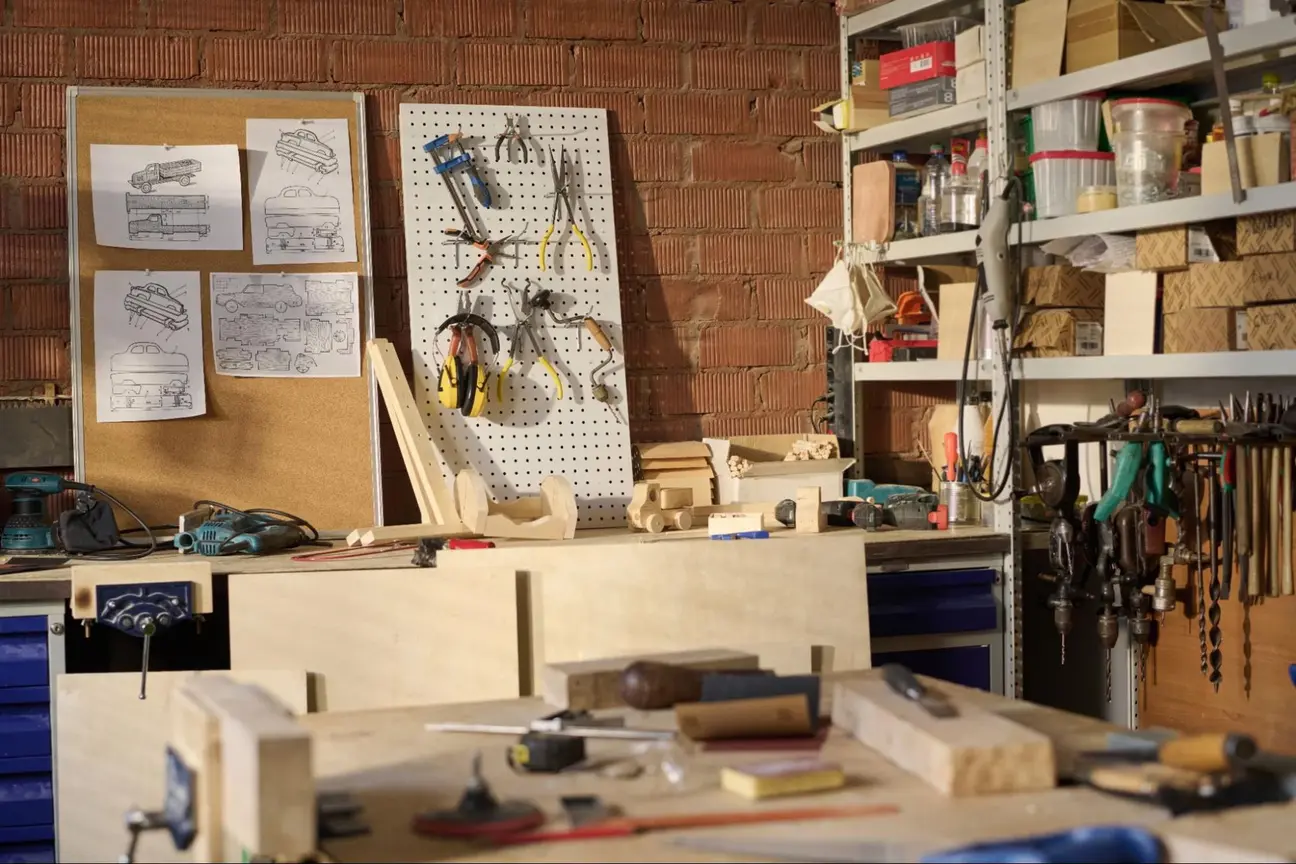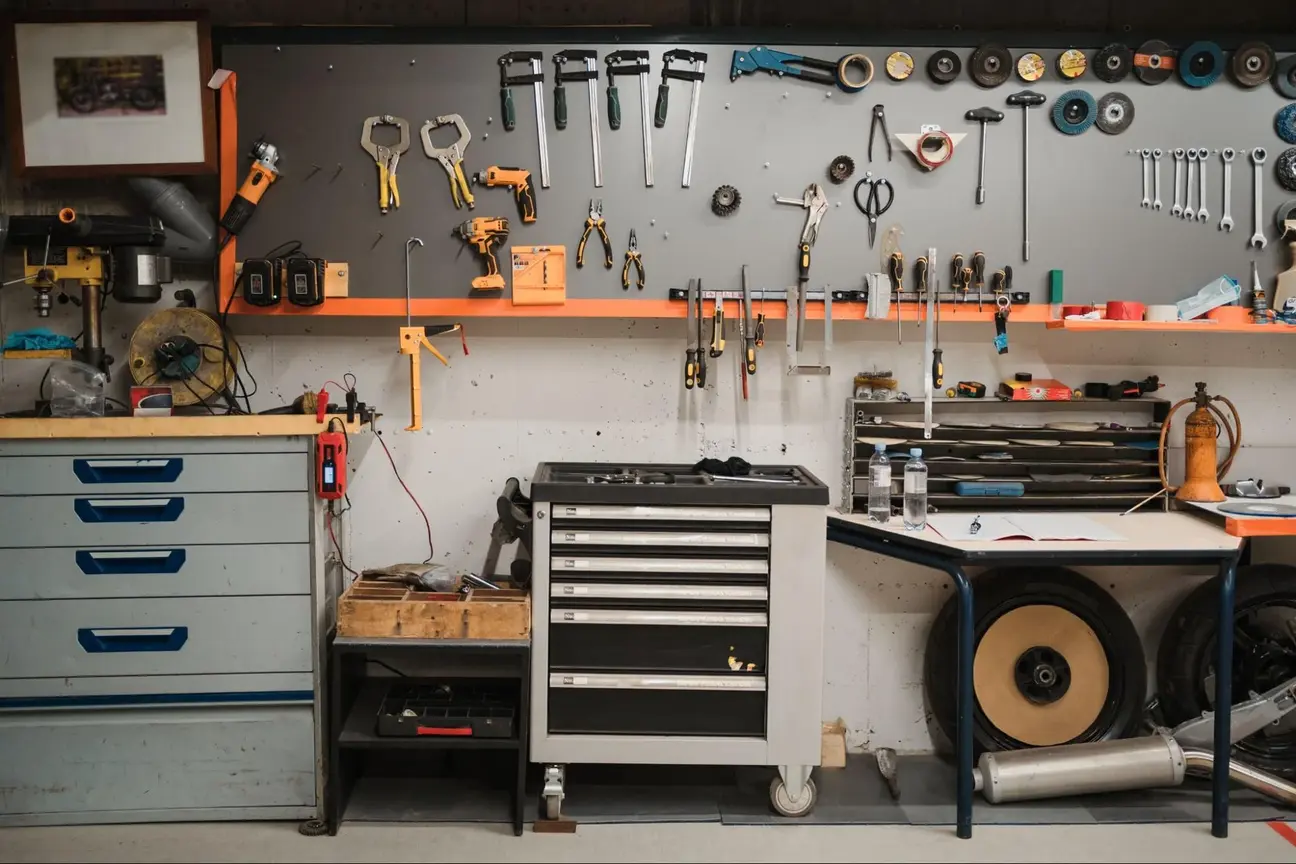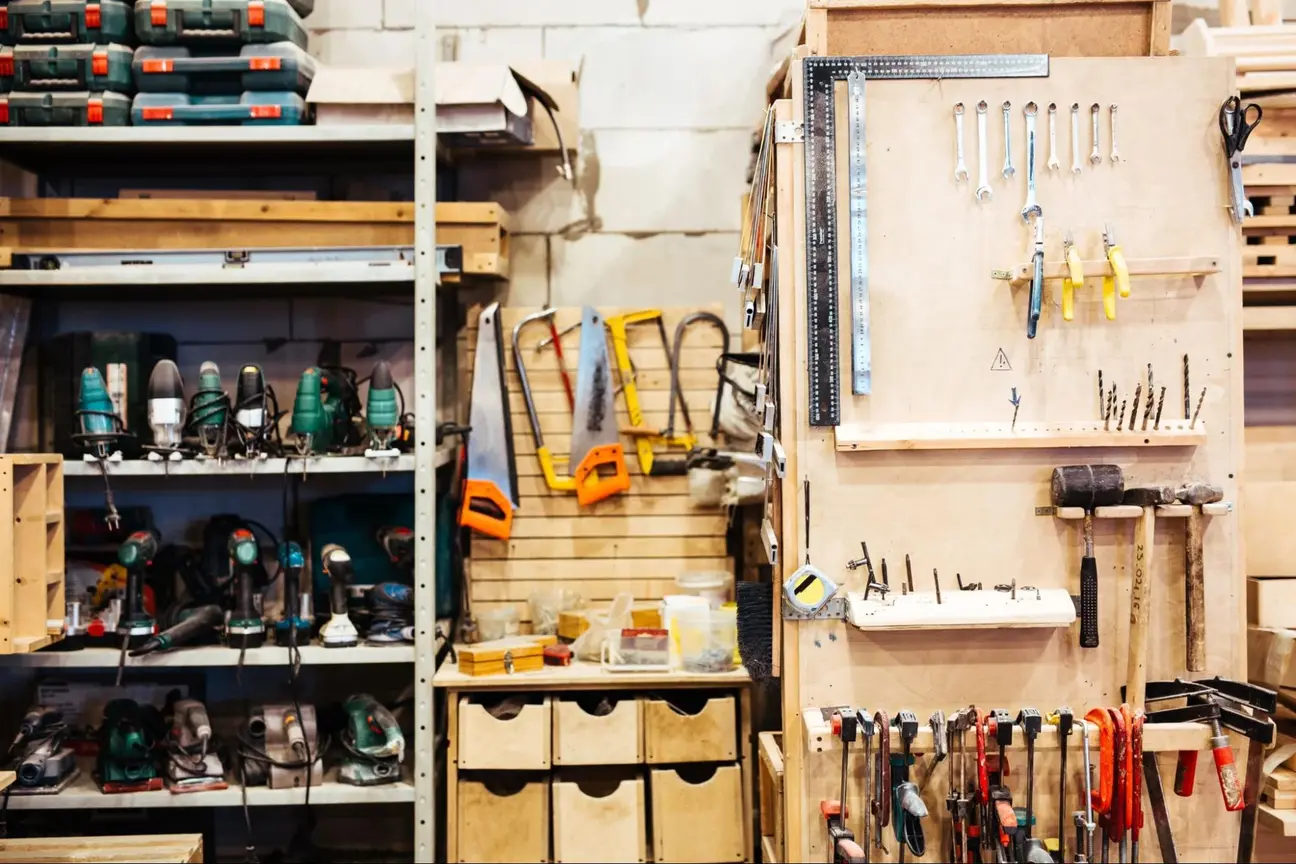
A well-organized home workshop can transform your DIY projects from chaotic to efficient. Whether you’re a weekend hobbyist or a seasoned handyman, setting up a functional workspace is crucial for productivity and enjoyment. By implementing innovative storage solutions and layout strategies, you can maximize your workshop’s potential and make every project more manageable.
Creating an organized workshop starts with assessing your space and needs. Consider the types of projects you typically undertake and the tools you use most frequently. That will help you prioritize storage and workstation placement. Rolling workbenches can be particularly useful if your workshop doubles as a garage, allowing you to easily transition between parking and working spaces.
Adequate tool storage is the backbone of a well-organized workshop. Pegboards are versatile options for hanging hand tools, while drawer systems can keep smaller items neatly tucked away. Remember to label everything clearly to save time and frustration when searching for specific tools.
A well-designed workshop enhances productivity and enjoyment of your DIY projects. Careful planning of your space, layout, and storage solutions will create an efficient and functional work area.
Select a location that suits your needs and available space. A garage or shed can be ideal for a home workshop. Consider factors like:
If using a garage, determine how much space you can dedicate to your workshop while still accommodating vehicles. Ensure a shed is large enough for your tools and projects.
Plan your workshop layout for optimal workflow. Place frequently used tools and workspaces in easily accessible areas. Consider these elements:
To maximize space efficiency, combine wall-mounted storage, shelving units, and mobile carts—position power tools with their operational space in mind to avoid congestion.
Make the most of your available area, especially in small workshops. Utilize vertical space with:
Consider multi-functional furniture like folding workbenches or mobile tool stands. Use corners effectively with corner shelving units. Install adequate lighting to make the space feel larger and improve visibility.
Plan a modular layout for small garages or sheds that allows you to reconfigure the space as needed. Wheeled storage units provide flexibility for adapting your workshop to different projects.

Efficient tool organization is crucial for a productive home workshop. Proper storage and management of your tools and equipment will save time, reduce frustration, and extend the life of your tools.
Start by identifying the core tools you need for your projects. A basic set should include a hammer, screwdrivers, pliers, wrenches, and a tape measure. For woodworking, add chisels, a hand saw, and sandpaper. Power tools like a drill, circular saw, and jigsaw are versatile additions.
Invest in quality tools that fit your budget and needs. Consider multi-purpose tools to save space and money. Don’t forget safety gear such as safety glasses, ear protection, and work gloves.
Regularly assess your tool collection. Replace worn-out tools and add specialized ones as your skills and projects evolve.
Organize your tools to maximize accessibility and protect them from damage. For frequently used hand tools, use pegboards or slatwall systems. Install hooks and holders to keep tools visible and easy to grab.
Consider a rolling tool chest or cabinet for power tools. That provides secure storage and mobility. Dedicate drawers or shelves for specific tool types.
Use foam inserts or custom-cut foam blocks in drawers to create designated spots for each tool. This prevents tools from shifting and makes it easy to spot missing items. Label storage areas clearly and group similar tools together for efficiency.
Create custom storage for oddly shaped tools. Wall-mounted racks work well for levels, saw blades, and clamps. Use magnetic strips for metal tools and small parts.
Install a ceiling-mounted storage system for long items like lumber and pipes. That frees up valuable floor space.
Build or buy a drill bit organizer to keep bits sorted by size and type. Do the same for screws, nails, and other small hardware using clear plastic containers or a multi-drawer organizer.
Consider a dedicated area for your miter saw and router table. These tools often require additional space for material handling.
Your workbench is the heart of your workshop. Choose a sturdy bench with ample work surface and storage options underneath.
Install a vise for secure clamping of materials. Add bench dogs or a tool well for additional versatility.
Keep frequently used tools within arm’s reach. Mount a small pegboard above your workbench for essential hand tools.
Incorporate good lighting, such as an adjustable task light, to illuminate your work area. Consider adding power strips or outlets to your workbench for easy access to electricity.

Efficient organization and regular maintenance are crucial for a productive home workshop. A well-structured space enhances safety, improves workflow, and prolongs the life of your tools and equipment.
Pegboards and wall storage are excellent for keeping frequently used tools within easy reach. Install pegboards above your workbench and use hooks to hang hand tools, measuring devices, and small power tools.
For larger items, consider installing sturdy shelves along the walls. Use plastic storage bins on these shelves to organize smaller components like screws, nails, and washers.
Implement a French cleat system for versatile wall storage. That allows you to easily rearrange tool holders and shelves as your needs change.
Build a vertical storage rack for lumber and sheet goods. That will save floor space and keep materials organized and easily accessible.
Use rolling tool chests with drawers to store and protect valuable tools. Their mobility allows you to move them around your workshop as needed.
Establish a daily cleanup routine to keep your workshop tidy. At the end of each work session, sweep floors and wipe down surfaces.
Install a dust collection system to manage sawdust and debris. That improves air quality and reduces cleanup time.
Oil and maintain your tools regularly to ensure they perform optimally and last longer. Create a maintenance schedule for power tools and machinery.
Use labeled containers for different types of waste: wood scraps, metal shavings, and general trash. That makes disposal easier and promotes recycling.
Keep a dedicated area for project plans and sketches. Use a bulletin board or whiteboard to keep current project details visible.
Proper lighting is essential for safety and accuracy. Install bright overhead lights and task lighting at workstations.
Ensure adequate ventilation to remove fumes and dust. If natural airflow is limited, consider installing exhaust fans or a ventilation system.
Keep a well-stocked first aid kit in an easily accessible location. Familiarize yourself with its contents and replace used items promptly.
Install fire extinguishers at key points in your workshop and check them regularly to ensure they’re in working order.
Use anti-fatigue mats in areas where you stand for long periods. That reduces strain on your feet and back during extended projects.
Store flammable materials in a fireproof cabinet away from heat sources. Keep chemicals in their original containers with clear labels.
Wear appropriate safety gear for each task. Keep safety glasses, ear protection, and dust masks near your work area.
Organizing a home workshop boosts productivity and safety. Start by selecting the right space and planning an efficient layout. Prioritize tool organization and group similar items together. Use hooks, shelves, and drawers to keep everything tidy.
Ensure proper lighting and ventilation in your workshop. That will improve visibility and maintain a comfortable working environment. By implementing these tips, you’ll create a functional, safe, and efficient home workshop tailored to your needs.
Roll-around workbenches are ideal for small workshops. They allow you to quickly convert your garage into a workspace and can be pushed against the wall when not in use.
Install modular shelving units to maximize vertical storage. Store small items in clear plastic bins and label them for easy identification.
Install pegboards on available wall space to hang hand tools. That keeps frequently used items within easy reach.
Use magnetic strips to hold metal tools. Install wall-mounted cabinets to store power tools and supplies that are not used daily.
Group similar tools and equipment together. Place frequently used items within arm’s reach of your primary work area.
Ensure adequate lighting in all areas of your workshop. Create dedicated zones for different types of work, such as cutting, assembly, and finishing.